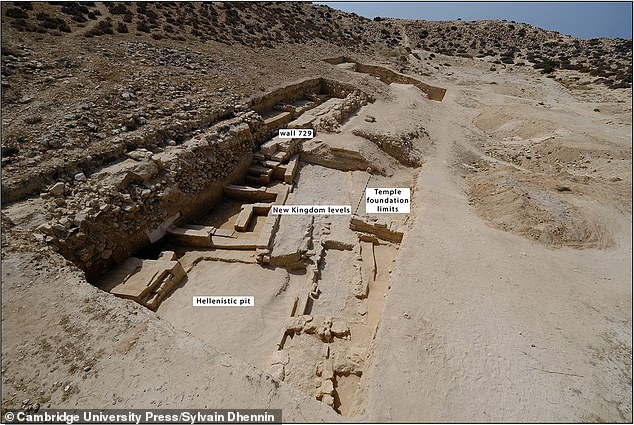
3,400-Year-Old Egyptian Town Linked to Tutankhamun’s Father Unearthed by Archaeologists
Archaeologists Unearth Ancient Egyptian Town Linked to King Tut’s Father
Archaeologists have discovered a “major” ancient Egyptian town at Kom el-Nugus, near Alexandria, likely built during the reign of Pharaoh Akhenaten, father of Tutankhamun. The settlement, dating to the 18th Dynasty (c. 1550–1292 BC), challenges previous assumptions that the site was only occupied from the Greek Hellenistic period onward.

The newly discovered settlement at Kom el-Nugus, with structures organized around a central street.
Led by Sylvain Dhennin of the French National Centre for Scientific Research, the team uncovered foundations of a monumental stone building—likely a temple—alongside pottery, jugs, and bowls. A key find was an amphora stamped with the name Meritaten, Akhenaten’s daughter and Tutankhamun’s sister, suggesting the town hosted a wine-making operation linked to her.
Historical Significance
Akhenaten, known for promoting the sun god Aten over traditional deities, ruled during the 18th Dynasty. His son Tutankhamun later reversed these religious reforms. The discovery of this settlement sheds light on the era’s urban planning and economy.

A stone block from a temple dedicated to Pharaoh Ramesses II, featuring the sun god Ra-Horakhty.
Military and Religious Hub
The site also revealed remnants of a temple commissioned by Ramesses II (1279–1213 BC), though most of its structure was dismantled over centuries. Dhennin notes the town may have served as a military outpost or administrative center, evidenced by funerary chapels mentioning soldiers. Its strategic location between the Mediterranean and Lake Mariout supports this theory.
Wine and Royal Branding
The amphora bearing Meritaten’s name hints at a royal-endorsed wine industry. “Meritaten” translates to “beloved of Aten,” reflecting her father’s religious devotion. Such artifacts underscore the town’s economic ties to the royal family.

Remains of a possible temple, with plunder trenches indicating later dismantling.
Rethinking Northern Egypt’s History
Published in Antiquity, the findings prompt a reevaluation of northern Egypt’s ancient history. Previously, Kom el-Nugus was overlooked in favor of more famous sites like Giza. Dhennin emphasizes the need for further excavation to clarify the settlement’s full extent and role.

Akhenaten, the “heretic pharaoh” who shifted Egypt’s religious landscape.
Legacy of Tutankhamun
Though Tutankhamun ruled briefly (c. 1332–1323 BC), his tomb’s 1922 discovery by Howard Carter made him a global icon. This new settlement adds context to his family’s influence.

Tutankhamun’s legacy endures through artifacts like this replica mask.
Future Exploration
With much of Kom el-Nugus still unexcavated, researchers aim to uncover more about its New Kingdom inhabitants. The site’s blend of residential, religious, and industrial features offers a rare glimpse into ancient urban life.

Map outlining the excavation areas at Kom el-Nugus.
This discovery not only enriches our understanding of Akhenaten’s reign but also highlights the interconnectedness of Egypt’s royal, economic, and military networks over 3,000 years ago.


